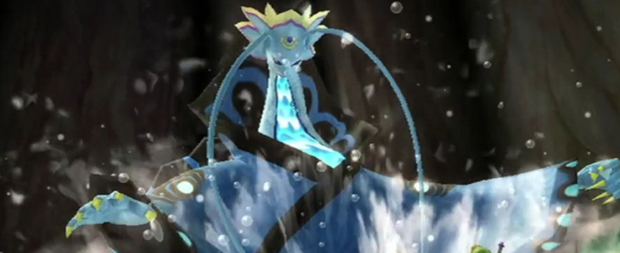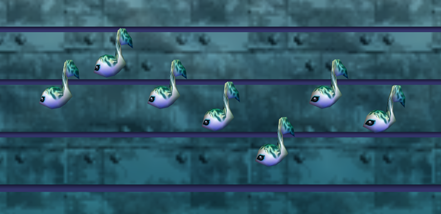Secrets of Skyward Sword: The Origin of the Sea Zoras
Posted on April 25 2013 by Dathen Boccabella

Zoras have come in many shapes and forms throughout the Legend of Zelda series. There’s the hostile River Zoras, and the more friendly Sea Zoras. With Oracle of Ages as the only exception, where both types of Zoras made an appearance, River Zoras are a staple of 2D titles and Sea Zoras are integral to 3D Zeldas.
We’ve seen Sea Zoras as eggs and infants in Majora’s Mask; as children and adults elsewhere; and even as the Rito after their evolution in The Wind Waker. Fans have always assumed that the origin of the Sea Zoras could be attributed to Farore’s creation of life; however Skyward Sword has more to say on the subject.
As the earliest game in the timeline, Skyward Sword tells of the five non-human tribes – the Gorons, Mogma, Kikwi, Ancient Robots and the Parella. With the absence of any Sea Zoras, many made the logical conclusion that the coral-jellyfish-hybrids – the Parella Tribe – served as the earliest evolution of the Zora tribe who has a history of changing shape.
On the contrary, I believe the origin of the Sea Zoras to be unrelated to the Parella Tribe. Now while my following theory is highly speculative, the supporting evidence is by no means lacking. In a nutshell, I propose that the Zoras were created by Faron the Water Dragon, potentially during what we see in Skyward Sword, but ultimately the precise time is irrelevant.
To evidence this all we need to do is draw parallels between Skyward Sword and Majora’s Mask. In the Nintendo 64 classic, Majora’s Mask, Zora Link must gather Lulu’s seven Zora eggs. Once collected, the eggs hatch into what appear as small tadpoles. However their appearance is very similar to that of musical notes, and sure enough, they align themselves with the stave on the wall in a way that indicates musical notation. From this Link is able to learn the New Wave Boss Nova.

Now, in Skyward Sword we have tadtones, which by all means are again colored tadpoles doubling as musical notes. The tadtones are scattered notes of Faron’s part of the Song of the Hero. It becomes Link’s task to collect all of the notes, where they form a sequence of music. With Link having proven his worth, Faron then teaches Link his part of the song denoted by the tadtones.
The two have very striking similarities, which leads me to consider the possibility of the tadtones – not the Parella – being the primitive form of what would become the Zoras. In that sense, Faron’s physical manifestation of his song as the tadtones may very well be the initial origin of the Zoras. Given time to mature, and perhaps some evolution, the Zoras became the majestic race we see in future Zelda titles.
This potential origin as musical notes serves to further explain the abilities of the Zora babies in Majora’s Mask. While within the Zelda universe this tadpole and musical note connection may explain the origins of the Sea Zoras, the original concept is little more than mere pun. The Japanese word おたまじゃくし (Otamajakushi) has the double meaning of “tadpole” and “musical note”. Both the Zora babies and the tadtones serve as a visual play-on-words to this fact.
Regardless, I believe Skyward Sword provides us with hints at the earliest manifestation of the Sea Zora tribe. Whether or not this bears any connection to the River Zoras, or whether they are yet another evolution, we can’t be sure. The majestic Sea Zoras are insistent that others “Don’t think us noble sea Zoras the same as those savage, vulgar river Zoras!” Whether or not future Zelda titles hinder or advance this theory of Zora origin, Skyward Sword yet again has provided potential answers to a question we never asked.
Follow me on Twitter @dathboc for your chance to win your choice of a Wii or Wii U game.



